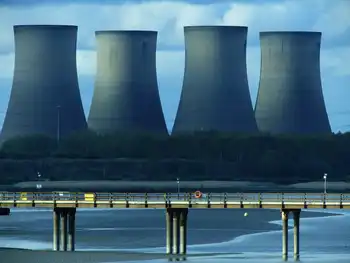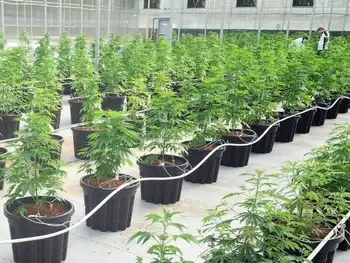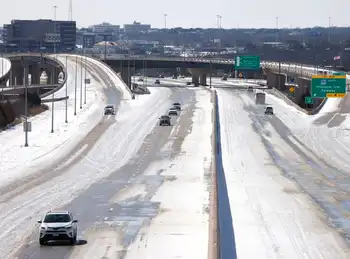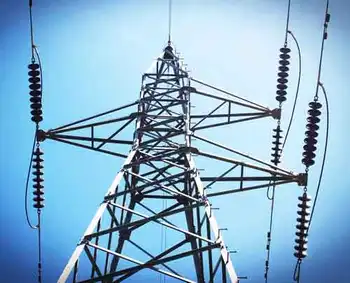Knoxville roofs catch some rays
KNOXVILLE, TENNESSEE - For Don and Jo Huisingh, a benefit of solar power is watching things go in the wrong direction.
"We love to go out and watch the meter go backwards," said Jo, 50, a part-time employee at the Knoxville Zoo.
Since July 2005, when the Huisinghs installed 27 solar panels, the couple has paid $100 to the Knoxville Utilities Board, Jo Huisingh said.
Their Knoxville home is just one of 10 stops on the East Tennessee portion of the National Solar Tour, an effort to raise awareness of solar power and the technologies available to private home and business owners.
Those interested in solar energy are invited to an hourlong workshop at the Ijams Nature Center to learn about installation and talk to local Knoxville installers. From 10 a.m.-2 p.m., individuals are encouraged to visit the 10 locales.
The locations range from the Mellow Mushroom pizza restaurant on the Strip in Knoxville to a Habitat for Humanity home in Lenoir City, and all sites are "open house" for anyone interested in solar energy - turning the sun's light into usable electricity - to stroll through and ask questions.
Nationally the tour includes nearly 5,000 homes in 2,900 communities, and tour organizers said they expect roughly 150,000 visitors around the country.
Green energy, or using renewable energy sources for energy such as the wind and sun, has exploded onto the national stage with growing concerns that current energy policies endanger American interests overseas, damage the environment and are costly to American taxpayers.
But, despite the increasing dialogue about green energy, local advocates said there is still a disconnect between consumers and the availability of solar technologies, which after installation can dramatically lower a household's energy costs.
"One of the biggest problems in Tennessee is, if somebody wants to (install solar panels), they don't even know where to go shopping," said Gil Melear-Hough, Tennessee director of renewable programs for the Southern Alliance for Clean Energy, a nonprofit promoting renewable energy sources.
Melear-Hough said an individual has to be pretty dedicated currently to put in a private system.
"If anybody spends money, they want to feel good that they're going to get their money's worth," he said. A small system can cost between $12,000 and $25,000, he added.
Dr. Greg and Susan Baker live in Sequoyah Hills with their 5-year-old son Nicholas. They installed eight solar photovoltaic panels last April at a cost of $14,000, said Greg Baker. Using two meters located in their kitchen, they can observe how much solar energy they produce and how much energy their home consumes, he said.
In monitoring the meters the Bakers have become more energy efficient and noticed immediate dividends, he added.
"In the spring, when we aren't using the heating or the air-conditioning, we are just about breaking even or making a little money," he said. "In the peak summer, our electric bill is about half of what it was before."
He estimated that it would take eight years for the paneling system at his home to pay for itself, and he acknowledged that such systems can put a pinch on a family's bottom line. He did, however, encourage those with the means to look into it because installation was relatively easy, noting that his family did not have to move out of the 1920s Tudor revival-style home as crews put the panels in place.
David Bolt, the founder of Sustainable Future LLC, a Knoxville-based group dedicated to promoting clean energy that is helping to promote the solar tour, said that, because of the region's history of providing extremely cheap energy, there is not much motivation to pursue solar energy.
Currently, the average household in the Tennessee Valley uses 1,320 kilowatt hours a month, resulting in a monthly utility bill between $120 and $125, according to the Tennessee Valley Authority. But a 20 percent rate increase on electricity by the TVA went into effect Oct. 1, and with the increase, more people are starting to look at solar energy systems. "In order to have widespread acceptance, either the cost of (solar photovoltaic systems) needs to come down, or energy costs need to go up," Bolt said.
But, before people go solar, they should look at making their homes more energy efficient with environmentally minded appliances, new windows and other means, said Jeff Christian, a building researcher at the Oak Ridge National Laboratory.
Christian has worked on nine research houses with Loudon County Habitat for Humanity.
One of the stops on the solar tour is a Habitat home that is nearly zero energy, meaning it produces and saves nearly as much energy as it consumes. Using a battery system that contributes energy back into the grid, a network of 200,000 homes would produce as much energy as a nuclear power plant, he noted.
The house boasts such technological advances as controlling the thermostat via the Internet so a homeowner can run the air conditioning during the morning and off-peak hours, and turn it off during peak hours, Christian said. Better windows and insulation keep the cooler air in more efficiently, he added.
"The lesson that I've learned is that you first very much want to do just about everything you possibly can before you invest in solar," Christian said.
Related News

Germany turns to coal for a third of its electricity
BERLIN - Germany is relying on highly-polluting coal for almost a third of its electricity, as the impact of government policies and the war in Ukraine leads producers in Europe’s largest economy to use less gas and nuclear energy.
In the first six months of the year, Germany generated 82.6 kWh of electricity from coal, up 17 per cent from the same period last year, according to data from Destatis, the national statistics office, published on Wednesday. The leap means almost one-third of German electricity generation now comes from coal-fired plants, up from 27 per cent last year. Production from natural…




